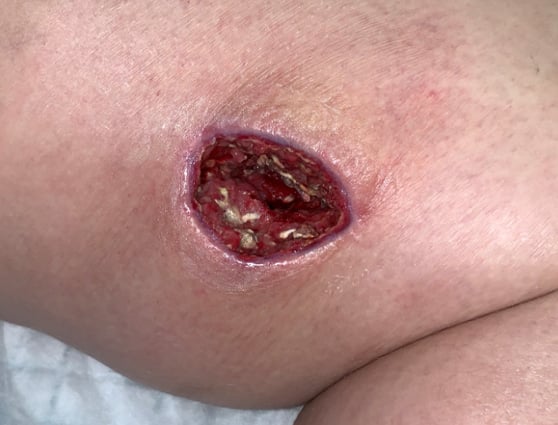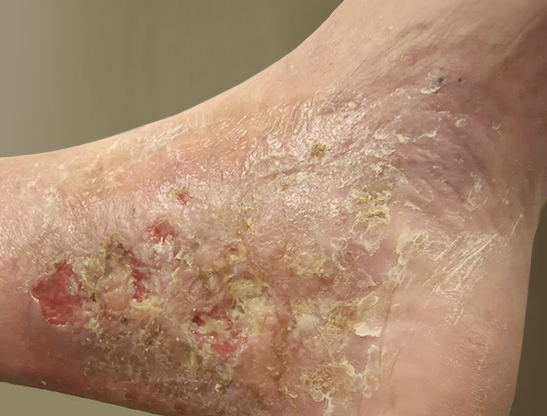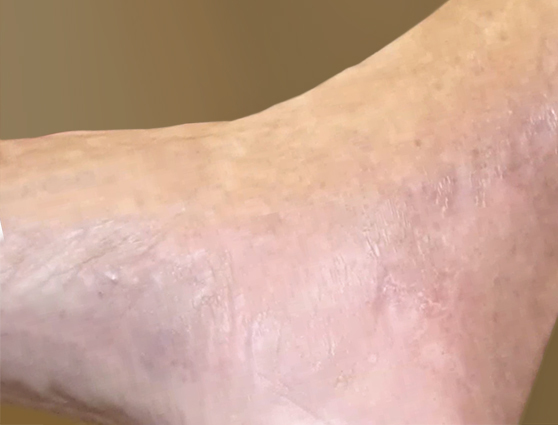Case studies for qPCR+NGS
NGS finds fungus that culture missed to resolve life-threatening wound

A young woman with type I diabetes, who had lost her kidney transplant a year previously, was hospitalized twice over six months with sepsis, the source of which remained a mystery. A large transplant surgery abdominal wound had been open for months, as had a heel pressure sore complicated by peripheral arterial disease, but both improved with better nutrition and regular wound care.
The patient then presented with sudden left leg pain, swelling, and the rapidly-ascending erythema characteristic of necrotizing infection. Fasciotomies of her lower leg were performed, and her left medial thigh was opened to drain what appeared to be an abscess. The muscle was perfectly pink and only clear, odorless fluid was found. This fluid then showed no growth on culture. Although wounds improved initially with NPWT, the patient didn’t look or feel better, and within a week the leg wound had grey/black tissue that appeared to be necrotic.
The same fluid was sent to MicroGenDX for DNA analysis (see full report), which detected Rhizopus — one of several fungal species that cause mucormycosis — a serious but rare fungal infection with a mortality rate of 50%. Early detection and treatment are critical for the best outcome, and the transplant team was notified immediately. Read study
Read more from Dr. Caroline Fife using MicroGenDX test results:
Pondering DNA Assay of Wounds: It only Matters When it Matters
At a Glance – When is a Dog NOT Man's Best Friend?
15-year non-healing leg ulcer closed using MicroGenDX results

A 70-year old patient presented with a venous leg ulcer that had persisted for 15 years. The wound remained open despite treatment based on multiple culture results.
A MicroGenDX qPCR+NGS test revealed Pluralibacter gergoviae as the dominant species in the wound at 82%, with three other species detected as well:
- S. epidermidis (6%)
- E. coli (5%)
- A. vaginalis (2%)

No fungal species were detected. The patient was then treated with a compound topical, and the wound closed within six weeks and has remain closed in episodic follow-ups.
Pluralibacter gergoviae is an opportunistic pathogen, and can be exceptionally resistant to antibiotics. Clinically, it has be recovered from respiratory samples, wounds, blood cultures, stools and urine. Pluralibacter gergoviae has also been isolated from environmental samples, coffee beans, refrigerated packed food, and various cosmetic products. The patient had been a restaurant owner for 17 years, handling refrigerated packaged food on a daily basis.
References
- Dowd, S.E. et al Molecular Diagnostics and personalized medicine in wound care: assessment of outcomes. Journal of Wound Care. 2011; 20: 5, 232-239
